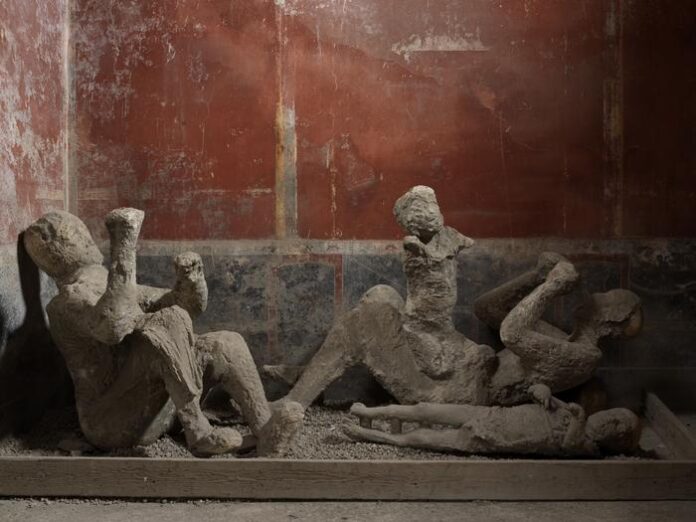We all know what happens when we assume. Turns out that saying rings true for the folks who thought they understood the nature of the Pompeii residents killed in 79 C.E. after Mt. Vesuvius erupted and buried, then preserved their bodies in ash.
The conventional wisdom held that Pompeii’s residents were wealthy Romans — either on holiday or enjoying their second home. That notion appears to be very, very wrong, according to a study in Current Biology.
DNA Shows Diverse Backgrounds
Researchers extracted and analyzed DNA from bone fragments of 14 Vesuvius victims’ skeletons. The genetic data showed that, rather than all originating in one part of Italy, they had diverse genomic backgrounds indicating that they hailed from several areas of the Eastern Mediterranean.
The genomic data, combined with the location and positions of the victims, also challenged our conceptions of traditional gender and family roles.
“The scientific data we provide do not always align with common assumptions,” David Reich, a Harvard University researcher, and an author of the study, said in a press release. “For instance, one notable example is the discovery that an adult wearing a golden bracelet and holding a child, traditionally interpreted as a mother and child, were an unrelated adult male and child. Similarly, a pair of individuals thought to be sisters, or mother and daughter, were found to include at least one genetic male.”
Understanding Ancient Societies
The researchers’ initial goal wasn’t to shift paradigms, but simply to gain as much understanding as they could about the victims’ relationships with each other, their gender, and their ancestry.
Combining genetics with historical information and archeological evidence allows researchers to paint both a more complete and more accurate picture, and demonstrates how teamwork from different disciplines can unearth rich, complex stories.
“Our findings have significant implications for the interpretation of archaeological data and the understanding of ancient societies,” co-author Alissa Mittnik, also from Harvard University, said in a press release. “They highlight the importance of integrating genetic data with archaeological and historical information to avoid misinterpretations based on modern assumptions.”
Source : Discovermagazine














